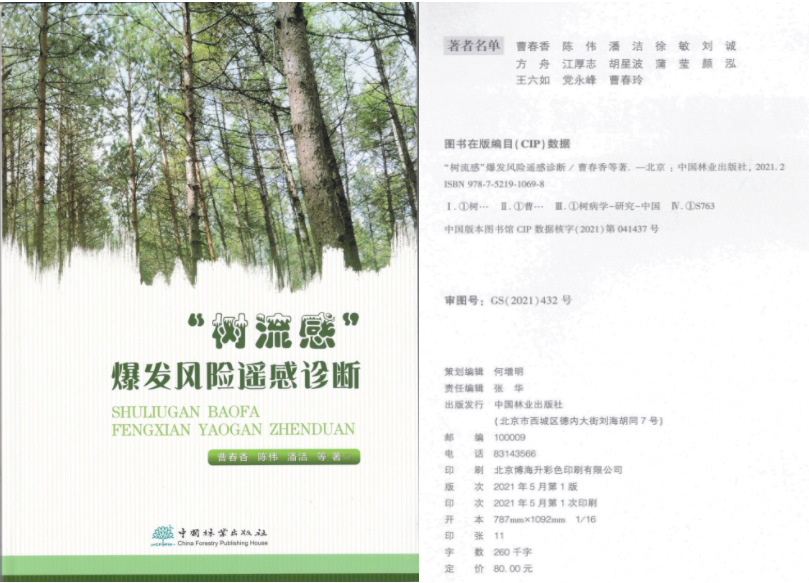With the increasing impact of global climate change on the forest ecosystem, together with the globalization of human production and the international trade of forest products, the outbreak and spread of forest diseases become more frequent, causing serious ecological, economic and social harm. Among them, Sudden Oak Death (SOD) is one of the typical cases. Aiming at the prediction and early warning on the outbreak and transmission risk of global SOD, Dr. Wei CHEN from School of Earth System Science, Tianjin University, in collaboration with Professor Chunxiang Cao from Aerospace Information Research Institute of CAS carried out diagnosis based on remote sensing technology. The related results have been summarized in a monograph titled with "Remote sensing diagnosis of SOD outbreak risk", which was recently published by China Forestry Press.
This monograph introduces the core achievements of remote sensing-based diagnosis and early warning of the outbreak risk of SOD. Based on multi-source remote sensing data, the global environmental factor datasets of SOD was established, and the global spatial and temporal characteristics of SOD were analyzed. Using remote sensing and geographic information system (GIS), the main environmental factors affecting the distribution and spread of SOD were analyzed, and its potential areas were classified and mapped. Additionally, according to the pest risk assessment theory, the invasion risk assessment indicator system and early warning model of SOD were constructed, and finally, the potential invasion and transmission risk of SOD in China was predicted.
